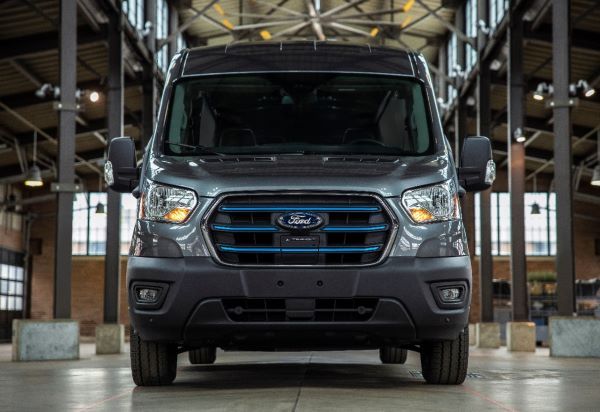Photo courtesy of Ford.
Electric trucks and vans such as the Ford E-Transit will revolutionize fleet, if operators understand how to prepare.
It’s no secret that technology within the van and truck industry has drastically evolved — and now, one of the top trends making headlines is the electrification of fleets. Not only will electric vehicles reduce the transportation industry’s negative effects on the environment, but they can also serve as a cost-effective option that saves fleet managers money in the long run. Let’s explore the ins and outs of electric fleet design and how to prepare for fleet electrification.
Global Electric Vehicle Trends
Auto companies around the world are expected to spend $185 billion on the development of new electric vehicles.
In addition to more funding dedicated to electrical vehicle development, the consumer mindset surrounding these technologically advanced vehicles has evolved, too.
While COVID-19 hit the market hard with a 25% decline in electric vehicle purchases in the first three months of 2020, by February of 2021 EV sales grew 40% year over year. This is due to technological advances, including better batteries, and the expansion of charging stations.
In addition, President Biden has called on the U.S. to transition the economy “away from the oil industry,” a movement whose success depends upon electrical transportation. This is due to the fact that almost three-quarters of the oil consumption in the United States in 2019 came from road transportation. The answer? Electric vehicles that can transport goods.
Advances in Electric Fleet Vehicle Design
If you’re looking to learn about fleet design innovation, turn to none other than General Motors, which earlier this year launched BrightDrop, its new EV delivery business unit.
BrightDrop is focused entirely on providing commercial customers with all of the necessary vehicles, equipment and services to electrify their delivery fleets. Their first products, the EV600, a fully electric delivery van built using GM’s new Ultium EV platform, and the EP1, an electrified palette, are slated to be produced later in 2021.
Ford is slated to introduce the new electric Transit van later this year that boasts “whisper-quiet powertrain and zero emissions.”
Benefits of Electric Vehicles
There are a number of reasons why it makes sense for fleet managers to explore electric vehicle options. Some of the major electric vehicle benefits include:
- Reducing pollution and emissions
- Saving money (since there are no fuel expenses and significantly less maintenance costs)
- A responsive vehicle with good torque
- Digitally connected vehicles
How to Prepare for Fleet Electrification
So, what are the next steps? Here are some helpful tips as you explore adding electric vehicles to your fleet.
- Research, research, research. Do your homework, and explore the most cost-effective and efficient electric vehicle to bring into your fleet. For example, the U.S. Department of Energy provides a variety of resources, including information on finding electric vehicle models, vehicle charging, fuel costs, and more. A reputable fleet management company may also have a helpful resource center.
- Invest in charging infrastructure. States and policymakers have started investing in electric vehicle charging infrastructure; New York recently approved a $701 million program to construct charging stations, and the California Public Utilities Commission has allocated $437 million for 40,000 electric vehicle charging stations.
- Keep up to date on technology. Electric vehicle technology is constantly improving, which means it might make more sense to lease instead of buy. Resources like InsideEVs offer the latest industry information.
- Seek adoption incentives. Incentives range from HOV lane access and reduced electricity rates to rebates on charging infrastructure and tax credits on EV purchases. Enel X maintains a webpage where you can search for incentives based on your zip code. Some utilities will work directly with fleets to better manage their charging, while others are running “make ready” programs which cover all of the costs of increasing depot electrical capacity up to the meter.
At the end of the day, it’s always best to research your options before investing in electric vehicles. But know that the future of fleet transportation will start moving to electric because of the environmental impacts. In fact, in 2018, 28% of U.S. greenhouse gas emissions came from transportation.
Fleet managers are answering the sustainable call and are starting to commit to electric fleets — for the good of the environmental and their bottom line.
Diana serves as vice president of strategic pursuits at Merchants Fleet. She also serves on the Automotive Fleet Leasing Association’s Women in Fleet, Conference, and Virtual Learning task forces.
by Diana Holland
CUT COTS OF THE FLEET WITH OUR AUDIT PROGRAM
The audit is a key tool to know the overall status and provide the analysis, the assessment, the advice, the suggestions and the actions to take in order to cut costs and increase the efficiency and efficacy of the fleet. We propose the following fleet management audit.




